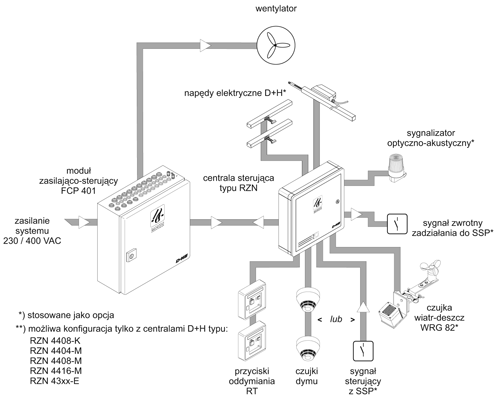 During normal operation of ventilation and air conditioning systems, fire dampers remain open, Fire ventilation cut-off dampers, however, remain closed. During the normal operation of the facility, both cut-off fire dampers and fire ventilation cut-off dampers, so they remain in a waiting position. In the event of a fire, in a fire zone, the fire shut-off dampers and the fire ventilation shut-off dampers go to the safety position. Cut-off fire dampers ensure the separation of the zone covered by the fire – they close and thus protect the remaining zones against the penetration of smoke and fire through the ventilation duct system. Thus, they enable the further operation of ventilation and air conditioning systems in other zones. At the same time, in the fire zone, fire ventilation shut-off dampers open and enable the protection of escape routes against smoke.. Fire ventilation cut-off dampers remain closed in other non-hazardous areas.
During normal operation of ventilation and air conditioning systems, fire dampers remain open, Fire ventilation cut-off dampers, however, remain closed. During the normal operation of the facility, both cut-off fire dampers and fire ventilation cut-off dampers, so they remain in a waiting position. In the event of a fire, in a fire zone, the fire shut-off dampers and the fire ventilation shut-off dampers go to the safety position. Cut-off fire dampers ensure the separation of the zone covered by the fire – they close and thus protect the remaining zones against the penetration of smoke and fire through the ventilation duct system. Thus, they enable the further operation of ventilation and air conditioning systems in other zones. At the same time, in the fire zone, fire ventilation shut-off dampers open and enable the protection of escape routes against smoke.. Fire ventilation cut-off dampers remain closed in other non-hazardous areas.
Due to the control method, we distinguish between two types of cut-off fire dampers:
– automatic – not needing an external command to move to the safety position
– only equipped with a thermal release,
– remote control – needing an external command to move to a safe position.
The transition of the automatic fire dampers to the safety position occurs when the temperature rises above the temperature limit of the thermal fuse, which, after activation, starts the mechanical drive of the damper – in most cases spring operated, in which the potential energy is stored, enabling the damper to be closed or as a result of manual release. In view of the above, in the case of automatic fire dampers, we can speak, that they are energy flaps, because they do not require external energy to enter the safety position. The thermal fuse is also a must for remote-controlled fire damper. Therefore, the closing of the remote-controlled flap may take place depending on what happens before, or due to a rise in temperature above the temperature release limit of the thermal release, or as a result of a command from CSP, for which the control energy is necessary, or as a result of a manual trip. In the case of fire ventilation cut-off dampers, the transition to the safety position takes place as a result of a command from the CSP, or as a result of a manual trip. All dampers used in fire ventilation systems (except for transfer valves) are remote controlled dampers – requiring steering energy.
The control mechanism is responsible for the execution of the CSP command by the remote-controlled damper. The possibility of extending the automatic damper mechanism to a remotely controlled damper after installing the damper in a building partition means, that the damper control mechanism is an evolutionary one.